NVIDIA Hopper GPU Architecture and H100 Accelerator Announced: Working Smarter and Harder
by Ryan Smith on March 22, 2022 11:45 AM EST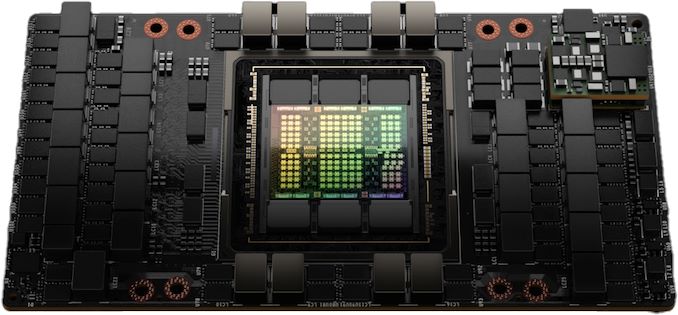
Depending on your point of view, the last two years have either gone by very slowly, or very quickly. While the COVID pandemic never seemed to end – and technically still hasn’t – the last two years have whizzed by for the tech industry, and especially for NVIIDA. The company launched its Ampere GPU architecture just two years ago at GTC 2020, and after selling more of their chips than ever before, now in 2022 it’s already time to introduce the next architecture. So without further ado, let’s talk about the Hopper architecture, which will underpin the next generation of NVIDIA server GPUs.
As has become a ritual now for NVIDIA, the company is using its Spring GTC event to launch its next generation GPU architecture. Introduced just two years ago, Ampere has been NVIDIA’s most successful server GPU architecture to date, with over $10B in data center sales in just the last year. And yet NVIDIA has little time to rest on their laurels, as the the growth and profitability of the server accelerator market means that there are more competitors than ever before aiming take a piece of NVIDIA’s market for themselves. To that end, NVIDIA is ready (and eager) to use their biggest show of the year to talk about their next generation architecture, as well as the first products that will implement it.
Taking NVIDIA into the next generation of server GPUs is the Hopper architecture. Named after computer science pioneer Grace Hopper, the Hopper architecture is a very significant, but also very NVIDIA update to the company’s ongoing family of GPU architectures. With the company’s efforts now solidly bifurcated into server and consumer GPU configurations, Hopper is NVIDIA doubling down on everything the company does well, and then building it even bigger than ever before.
Hyperbole aside, over the last several years NVIDIA has developed a very solid playbook for how to tackle the server GPU industry. On the hardware side of matters that essentially boils down to correctly identifying current and future trends as well as customer needs in high performance accelerators, investing in the hardware needed to handle those workloads at great speeds, and then optimizing the heck out of all of it. And for NVIDIA, the last step may very well be the most important bit: NVIDIA puts a lot of work into getting out of doing work.
That mentality, in turn, is front and center for NVIDIA’s Hopper architecture. While NVIDIA has made investments across the board to improve performance, from memory bandwidth and I/O to machine learning and confidential computing, the biggest performance uplifts with Hopper are in the areas where NVIDIA has figured out how to do less work, making their processors all the faster.
Kicking things off for the Hopper generation is H100, NVIDIA’s flagship server accelerator. Based on the GH100 GPU, GH100 is a traditional NVIDIA server-first launch, with the company starting at the high end to develop accelerator cards for their largest and deepest pocketed server and enterprise customers.
| NVIDIA Accelerator Specification Comparison | |||||
| H100 | A100 (80GB) | V100 | |||
| FP32 CUDA Cores | 16896 | 6912 | 5120 | ||
| Tensor Cores | 528 | 432 | 640 | ||
| Boost Clock | ~1.78GHz (Not Finalized) |
1.41GHz | 1.53GHz | ||
| Memory Clock | 4.8Gbps HBM3 | 3.2Gbps HBM2e | 1.75Gbps HBM2 | ||
| Memory Bus Width | 5120-bit | 5120-bit | 4096-bit | ||
| Memory Bandwidth | 3TB/sec | 2TB/sec | 900GB/sec | ||
| VRAM | 80GB | 80GB | 16GB/32GB | ||
| FP32 Vector | 60 TFLOPS | 19.5 TFLOPS | 15.7 TFLOPS | ||
| FP64 Vector | 30 TFLOPS | 9.7 TFLOPS (1/2 FP32 rate) |
7.8 TFLOPS (1/2 FP32 rate) |
||
| INT8 Tensor | 2000 TOPS | 624 TOPS | N/A | ||
| FP16 Tensor | 1000 TFLOPS | 312 TFLOPS | 125 TFLOPS | ||
| TF32 Tensor | 500 TFLOPS | 156 TFLOPS | N/A | ||
| FP64 Tensor | 60 TFLOPS | 19.5 TFLOPS | N/A | ||
| Interconnect | NVLink 4 18 Links (900GB/sec) |
NVLink 3 12 Links (600GB/sec) |
NVLink 2 6 Links (300GB/sec) |
||
| GPU | GH100 (814mm2) |
GA100 (826mm2) |
GV100 (815mm2) |
||
| Transistor Count | 80B | 54.2B | 21.1B | ||
| TDP | 700W | 400W | 300W/350W | ||
| Manufacturing Process | TSMC 4N | TSMC 7N | TSMC 12nm FFN | ||
| Interface | SXM5 | SXM4 | SXM2/SXM3 | ||
| Architecture | Hopper | Ampere | Volta | ||
Ahead of today’s keynote presentation – which as this article goes up, is still going on – NVIDIA offered a press pre-briefing on Hopper. In traditional NVIDIA fashion, the company has been very selective about the details released thus far (least it gets leaked ahead of Jensen Huang’s keynote). So we can’t make a fully apples-to-apples comparison to A100 quite yet, as we don’t have the full specifications. But based on this pre-briefing, we can certainly tease out some interesting highlights about NVIDIA’s architecture.
First and foremost, NVIDIA is once again building big for their flagship GPU. The GH100 GPU is comprised of 80 billion transistors and is being built on what NVIDIA is calling a “custom” version of TSMC’s 4N process node, an updated version of TSMC’s N5 technology that offers better power/performance characteristics and a very modest improvement in density. So even at just two years after Ampere, NVIDIA is making a full node jump and then some for GH100. At this point NVIDIA is not disclosing die sizes, so we don’t have exact figures to share. But given the known density improvements of TSMC’s process nodes, GH100 should be close in size to the 826mm2 GA100. And indeed, it is, at 814mm2.
Like NVIDIA’s previous sever accelerators, the H100 card isn’t shipping with a fully-enabled GPU. So the figures NVIDIA is providing are based on H100 as implemented, with however many functional units (and memory stacks) are enabled.
In regards to performance, NVIDIA isn’t quoting any figures for standard vector performance in advance. They are however quoting tensor performance, which depending on the format is either 3x or 6x faster than the A100 accelerator. We’ll see how this breaks down between clockspeed increases and either larger or additional tensor cores, but clearly NVIDIA is once again throwing even more hardware at tensor performance, a strategy that has worked out well for them so far.
Officially, NVIDIA likes to quote figures with sparsity enabled, but for the purposes of our spec sheet I’m using the non-sparse numbers for a more apples-to-apples comparison with previous NVIDIA hardware, as well as competing hardware. With sparsity enabled, TF32 performance and on down can be doubled.
Memory bandwidth is also improving significantly over the previous generation, with H100 offering 3TB/second of bandwidth there. The increase in bandwidth this time around comes thanks to the use of HBM3, with NVIDIA becoming the first accelerator vendor to use the latest-generation version of the high bandwidth memory. H100 will come with 6 16GB stacks of the memory, with 1 stack disabled. The net result is 80GB of HBM3 running at a data rate of 4.8Gbps/pin, and attached to a 5120-bit memory bus.
NVIDIA will be offering H100 in their usual two form factors: SXM mezzanine for high performance servers, and a PCIe card for more mainstream servers. The power requirements for both form factors have gone up significantly over the previous generation. NVIDIA is quoting an eye-popping 700 Watt TDP for the SXM version of the card, 75% higher than the official 400W TDP of the A100. For better or worse, NVIDIA is holding nothing back here, though the ongoing decline in transistor power scaling is not doing NVIDIA any favors, either.
Cooling such a hot GPU will be an interesting task, though not beyond current technology. At these power levels we’re almost certainly looking at liquid cooling, something the SXM form factor is well-suited for. Still, it’s worth noting that the rival OAM form factor – essentially the Open Compute Project’s take on SXM for use in accelerators – is designed to top out at 700W. So NVIDIA is seemingly approaching the upper limits of what even a mezzanine style card can handle, assuming that sever vendors don’t resort to exotic cooling methods.
Meanwhile the H100 PCie card will see its TDP raised to 350W, from 300W today. Given that 300W is the traditional limit for PCIe cards, it will be interesting to see how NVIDIA and their partners keep those cards cool. Otherwise, with just half the TDP of the SXM card, we’re expecting the PCIe version to be clocked/configured noticeably slower in order to temper the card’s power consumption.
Hopper Tensor Cores: Now With Transformer Engines
Moving on to the big-ticket architectural features of the Hopper architecture, we’re start with NVIDIA’s Transformer Engines. Living up to their name, the transformer engines are a new, highly specialized type of tensor core, that are designed to further accelerate transformer ML models.
In keeping with NVIDIA’s focus on machine learning, for the Hopper architecture the company has taken a fresh look at the makeup of the ML market, and what workloads are popular and/or the most demanding on existing hardware. The winner, in this regard, has been transformers, a type of deep learning model that have risen in popularity rather quickly due to their utility in natural language processing and computer vision. Recent advancements in transformer technology, such as the GPT-3 model, along with demand from service operators for better natural language processing, have made transformers the latest big breakthrough in ML.
But at the same time, the processing requirements for transformers are also hampering the development of even better models. In short, better models require an ever-larger number of parameters, and at over 175 billion parameters for GPT-3 alone, training times for transformers are becoming unwieldy, even on large GPU clusters.
To that end, NVIDIA has developed a variant of the tensor core specifically for speeding up transformer training and inference, which they have dubbed the Transformer Engine. NVIDIA has optimized this new unit by stripping it down to just processing the lower precision data formats used by most transformers (FP16), and then scaling things down even more with the introduction of an FP8 format as well. The goal with the new units, in brief, is to use the minimum precision necessary at every step to train transformers without losing accuracy. In other words, to avoid doing more work than is necessary.
With that said, unlike more traditional neural network models which are trained at a fixed precision throughout, NVIDIA’s latest hack for transformers is to vary the precision, since FP8 cannot be used throughout a model. As a result, Hopper’s transformer engines can swap between FP16 and FP8 training on a layer by layer basis, utilizing NVIDIA-provided heuristics that work to select the lowest precision needed. The net benefit is that every layer that can be processed at FP8 can be processed twice as fast, as the transformer engines can pack and process FP8 data twice as quickly as FP16.
Combined with the additional memory on H100 and the faster NVLink 4 I/O, and NVIDIA claims that a large cluster of GPUs can train a transformer up to 9x faster, which would bring down training times on today’s largest models down to a more reasonable period of time, and make even larger models more practical to tackle.
Meanwhile, on the inference side of matters, Hopper can also immediately consume its own FP8 trained models for inference use. This is an important distinction for Hopper, as it allows customers to otherwise skip converting and optimizing a trained transformer model down to INT8. NVIDIA isn’t claiming any specific performance benefits from sticking with FP8 over INT8, but it means developers can enjoy the same performance and memory usage benefits of running inference on an INT8 model without the previously-required conversion step.
Finally, NVIDIA is claiming anywhere between a 16x and 30x increase in transformer inference performance on H100 versus A100. Like their training claims, this is an H100 cluster versus an A100 cluster, so memory and I/O improvements are also playing a part here, but it none the less underscores that H100’s transformer engines aren’t just for speeding up training.
DPX Instructions: Dynamic Programming for GPUs
NVIDIA’s other big smart-and-lazy improvement for the Hopper architecture comes courtesy of the field of dynamic programming. For their latest generation of technology, NVIDIA is adding support for the programming model by adding a new set of instructions just for dynamic programming. The company is calling these DPX Instructions.
Dynamic programming, in a nutshell, is a way of breaking down complex problems into smaller, simpler problems in a recursive manner, and then solving those smaller problems first. The key feature of dynamic programming is that if some of these sub-problems are identical, then those redundancies can be identified and eliminated – meaning a sub-problem can be solved once, and its results saved for future use within the larger problem.
All of which is to say that, like Sparsity and Transformer Engines, NVIDIA is implementing dynamic programming to allow their GPUs to get out of doing more work. By eliminating the redundant parts of workloads that can be broken up per the rules of dynamic programming, it’s that much less work NVIDIA’s GPUs need to do, and that much faster they can produce results.
Though unlike Transformer Engines, adding dynamic programming support via the DPX Instructions is not so much about speeding up existing workloads on GPUs as it is enabling new workloads on GPUs. Hopper is the first NVIDIA architecture to support dynamic programming, so workloads that can be resolved with dynamic programming are normally run on CPUs and FPGAs. In that respect, this is NVIDIA finding one more workload they can steal from CPUs and run on a GPU instead.
Overall, NVIDIA is claiming a 7x improvement in dynamic programming algorithm performance on a single H100 versus naïve execution on an A100.
As for the real-world implications of DPX Instructions, NVIDIA is citing route planning, data science, robotics, and biology as all being potential beneficiaries of the new technology. These fields already use several well-known dynamic programming algorithms, such as Smith-Waterman and Flyod-Warshall, which score genetic sequence aligning and find the shortest distances between pairs of destinations respectively.
Overall, dynamic programming is one of the more niche fields among high performance workloads. But it’s one that NVIDIA believes can be a good fit for GPUs once the right hardware support is available.
Confidential Computing: Protecting GPU Data From Prying Eyes
Shifting away from performance-focused features, NVIDIA’s other big push with the Hopper architecture is on the security front. With the expansion of GPU usage in cloud computing environments – and especially shared VM environments – the company is taking a new focus on the security concerns that entails, and how to secure shared systems.
The end result of those efforts is that Hopper is introducing hardware support for trusted execution environments. Specifically, Hopper supports the creation of what NVIDIA is terming a confidential virtual machine, where all of the data within the VM environment is secure, and all of the data entering (and leaving) the environment is encrypted.
NVIDIA didn’t go over too many of the technical details underpinning their new security features in our-pre-briefing, but according to the company it’s a product of a mix of new hardware and software features. Of particular note, data encryption/decryption when moving to and from the GPU is fast enough to be done at the PCIe line rate (64GB/sec), meaning there’s no slowdown in terms of practical host-to-GPU bandwidth when using this security feature.
This trusted execution environment, in turn, is designed to resist all forms of tampering. The memory contents within the GPU itself are secured by what NVIDIA is terming a “hardware firewall”, which prevents outside processes from touching them, and this same protection is extended to data in-flight in the SMs as well. The trusted environment is also said to be secured against the OS or the hypervisor accessing the contents of the GPU from above, restricting access to just the owner of the VM. Which is to say that, even with physical access to the GPU, it shouldn’t be possible to access the data within a secure VM on hopper.
Ultimately, NVIDIA’s aim here appears to be making/keeping their customers comfortable using GPUs to process sensitive data by making them much hardware to break into when they’re working in a secured mode. This, in turn, is not only to protect traditionally sensitive data, such as medical data, but also to protect the kind of high-value AI models that some of NVIDIA’s customers are now creating. Given all of the work that can go into creating and training a model, customers don’t want their models getting copied, be it in a shared cloud environment or being pulled out of a physically insecure edge device.
Multi-Instance GPU v2: Now With Isolation
As an extension of NVIDIA’s security efforts with confidential computing, the company has also extended these protections to their Multi-Instance GPU (MIG) environment. MIG instances can now be fully isolated, with I/O between the instance and the host fully virtualized and secured as well, essentially granting MIG instances the same security features as H100 overall. Overall, this moves MIG closer to CPU virtualization environments, where the various VMs assume not to trust each other and are kept isolated.
NVLink 4: Extending Chip I/O Bandwidth to 900GB/sec
With the Hopper architecture also comes a new rendition of NVIDIA’s NVLink high-bandwidth interconnect for wiring up GPUs (and soon, CPUs) together for better performance in workloads that can scale out over multiple GPUs. NVIDIA has iterated on NVLink with every generation of their flagship GPU, and this time is no different, with the introduction of NVLink 4.
While we’re awaiting a full disclosure of technical specifications from NVIDIA, the company has confirmed that NVLink bandwidth on a per-chip basis has been increased from 600GB/second on A100 to 900GB/second for H100. Note that this is the sum total of all upstream and downstream bandwidth across all of the individual links that NVLink supports, so cut these figures in half to get specific transmit/receive rates.
| NVLink Specification Comparison | |||||
| NVLink 4 | NVLink 3 | NVLink 2 | |||
| Signaling Rate | 100 Gbps | 50 Gbps | 25 Gbps | ||
| Lanes/Link | 2 | 4 | 8 | ||
| Bandwidth/Direction/Link | 25 GB/sec | 25 GB/sec | 25 GB/sec | ||
| Total Bandwidth/Link | 50 GB/sec | 50 GB/sec | 50 GB/sec | ||
| Links/Chip | 18 (GH100) |
12 (GA100) |
6 (GV100) |
||
| Bandwidth/Chip | 900 GB/sec | 600 GB/sec | 300 GB/sec | ||
900GB/sec represents a 50% increase in I/O bandwidth for H100. Which is not as great an increase as H100’s total processing throughput, but a realistic improvement given the ever-escalating complexities in implementing faster networking rates.
Given that NVLink 3 was already running at a 50 Gbit/sec signaling rate, it’s not clear if the additional bandwidth is courtesy of an even faster signaling rate, or if NVIDIA has once again adjusted the number of links coming from the GPU. NVIDIA previously altered the NVLink lane configuration for A100, when they halved the lane width and doubled the number of lanes, all while doubling the signaling rate. Adding lanes on top of that means not having to figure out how to improve the signaling rate by even more, but it also means a 50% increase in the number of pins needed for NVLink I/O.
Along those lines, it’s also worth noting that NVIDIA is adding PCIe 5.0 support with Hopper. As PCIe is still used for host-to-GPU communications (until Grace is ready, at least), this means NVIDIA has doubled their CPU-GPU bandwidth, letting them keep H100 that much better fed. Though putting PCIe 5.0 to good use is going to require a host CPU with PCIe 5.0 support, which isn’t something AMD or Intel are providing quite yet. Presumably, someone will have hardware ready and shipping by the time NVIDIA ships H100 in Q3, especially since NVIDIA is fond of homogenization for their DGX pre-built servers.
Finally, with the launch of H100/NVLink 4, NVIDIA is also using this time to announce a new, external NVLink switch. This external switch extends beyond NVIDIA’s current on-board NVSwitch functionality, which is used to help build more complex GPU topologies within a single node, and allows H100 GPUs to directly communicate with each other across multiple nodes. In essence, it’s a replacement for having NVIDIA GPUs go through Infiniband networks in order to communicate cross-node.
The external NVLInk Switch allows for up to 256 GPUs to be connected together within a single domain, which works out to 32 8-way GPU nodes. According to NVIDIA, a single, 1U NVLink Switch offers 128 lanes of NVLink via 32 Octal SFP (OSFP) transceivers. The full Switch, in turn, offers a total bisection bandwidth of 70.4TB/second.
It’s worth noting, however, that the NVLink Switch is not a wholesale replacement for Infiniband – which of course, NVIDIA also sells through its networking hardware division. Infiniband connections between nodes are still needed for other types of communications (e.g. CPU to CPU), so external NVLink networks are a supplement to Infiniband, allowing H100 GPUs to directly chat amongst themselves.
NVIDIA HGX Rides Again: HGX For H100
Last, but not least, NVIDIA has confirmed that they’re updating their HGX baseboard ecosystem for H100 as well. A staple of NVIDIA’s multi-GPU designs since they first began using the SXM form factor for GPUs, HGX baseboards are NVIDIA-produced GPU baseboards for system builders to use in designing complete multi-GPU systems. The HGX boards provide the full connection and mounting environment for NVIDIA’s SXM form factor GPUs, and then sever vendors can route power and PCIe data (among other things) from their motherboards to the HGX baseboard. For the current A100 generation, NVIDIA has been selling 4-way, 8-way, and 16-way designs.
Relative to the GPUs themselves, HGX is rather unexciting. But it’s an important part of NVIDIA’s ecosystem. Server partners can pickup an HGX board and GPUs, and then quickly integrate that into a server design, rather than having to design their own server from scratch. Which in the case of H100, means that status quo will (largely) reign, and that NVIDIA’s server partners will be able to assemble systems in the same manner as before.
Hopper H100 Accelerators: Shipping In Q3 2022
Wrapping things up, NVIDIA is planning on having H100-equipped systems available in Q3 of this year. This will include NVIDIA’s full suite of self-built systems, including DGX and DGX SuperPod servers, as well as servers from OEM partners using HGX baseboards and PCIe cards. Though in typical fashion, NVIDIA is not announcing individual H100 pricing, citing the fact that they sell this hardware through server partners. We’ll have a bit more insight once NVIDIA announces the prices of their own DGX systems, but suffice it to say, don’t expect H100 cards to come cheap.


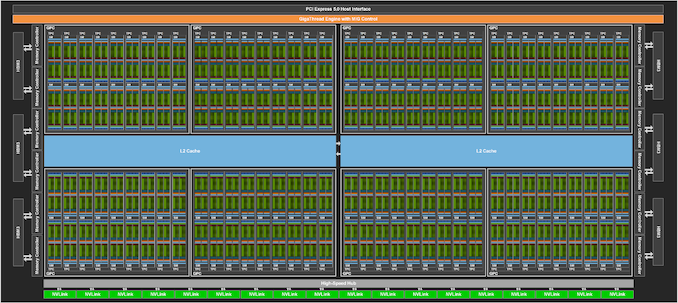
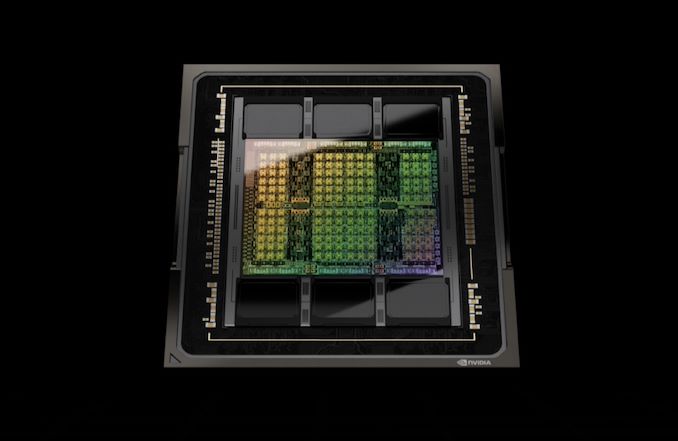
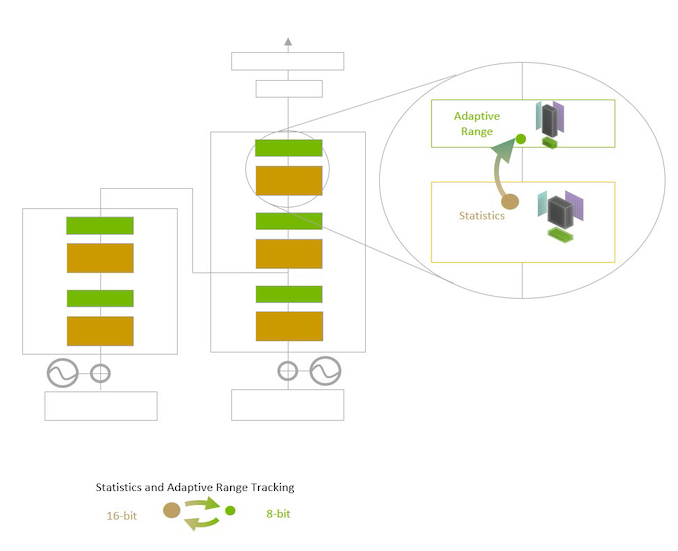
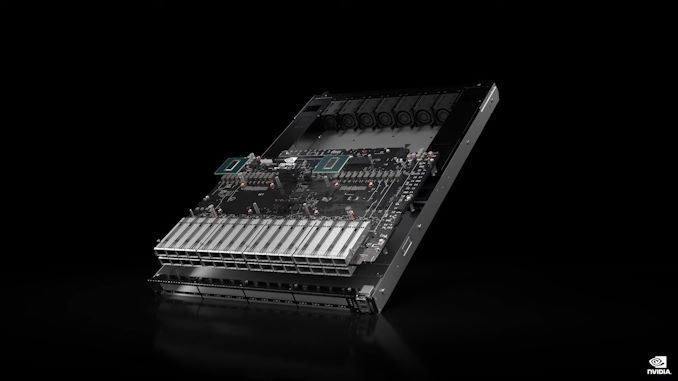
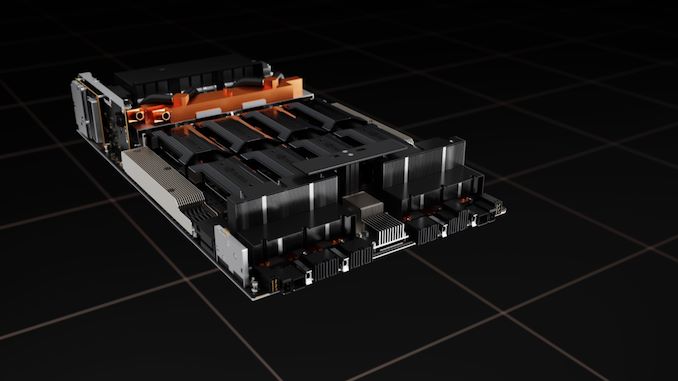









88 Comments
View All Comments
CiccioB - Monday, March 28, 2022 - link
I think you have not understood a simple thing: the chips you have listed are specialized chip that are designed to do a single thing or to work in a niche market. Where maybe they can sell for some ten thousands dollars each. Even AMD put some MB of cache on they game GPU and got a biog benefit capable of reducing the bus width towards the RAM (reducing power consumption and complexity costs). But they are aimed at a special market and manage at that with just few tens of MB, but if used for anything that is not moving textures and pixels they are terrible.GH100 is a GENERAL PURPOSE computing chip.
If you understand this, you'll understand that it is also a quite big chip at the reticule limit.
Now, of all the space you have available, you have to choose if it has to become cache or computing unit.
The more cache you put, the best chance SOME work run faster, but you for sure limit the total chip performance or even flexibility if you decide to remove a type of unit as a whole.
So GH100 cannot be compared to specialized chips. It's aimed at a different market.
About the amount of cache, you tell me I do not know anything about data access patterns, but you clearly do not know anything about Nvidia GPU cache organization if you can't tell configurable L1 cache (which can be partially configured as cache or a register file) vs plain L2 cache.
And I said that some hundreds of MB can be of some use to the chip. But you cannot put them on die, and you cannot have the chip suck 1500W of power for a 30% performance increment at best on some computational tasks.
Look at what you want, but cache on Hopper bigger than Ampere's and way bigger than AMD's Aldebaran chip. So Nvidia here put what they could to the problem.
We can't really teach Nvidia about the best choice of their architectures. You know, there are years of thorough simulations behind every choice, calculations on costs, power consumption and probability of being used. All compared to alternative choices. We know so little of the thing they have chosen to put on the chip, let's imagine about those they have not.
If they chose to make it that way, its because they thought (and simulated) that it best covers the market they are targeting.
Cache is a "dumb" option, transparent to the SW, easy to make, easy to extend as needed/possible. Unfortunately it is also space and power hungry. Everyone would like to put hundreds of MB of it anywhere. But it's not a secret that you cannot unless your chip becoming big and expensive. And that's why everyone is studying these 3D lego bricks with behemoth buses capable of using separate cache as if it were on the same die with minimal extra use of energy and latency (but radically truncating costs, so you can compensate with quantity to the quality).
Next generation technology will be mature enough to allow for 3D stacked chip of every kind. Cache too.
We'll see how bit they become, but a thing is certain: they will increase.
mode_13h - Wednesday, March 30, 2022 - link
> I think you have not understood a simple thingI think you didn't read my posts as carefully as I wrote them.
> GH100 is a GENERAL PURPOSE computing chip.
This point is not lost on me. Neither is the fact that Nvidia is counting on it being competitive on AI workloads. So, they cannot afford to lose too much ground to their up-and-coming purpose-built AI competition. This is why I expected to see them do more to keep up in terms of on-chip storage.
> GH100 cannot be compared to specialized chips. It's aimed at a different market.
It can and it will be. Someone doing AI workloads isn't going to give the H100 a pass because it has other features they don't need. They're going to compare it in terms of things like perf/$, perf/W, or simply perf/TCO on *their* workloads vs. the pure-bred competition. That's how the H100 is going to be judged.
Similarly, someone doing HPC workloads that don't involve AI (which is probably still the majority of them) isn't going to care if it has AI acceleration capabilities they have no intention of ever using.
This is the hazard of targeting too many markets with a single product. It's why AMD culled graphics hardware from their CDNA chips and it's probably why they + Nvidia are going to further bifurcate their big GPUs into separate AI- and HPC- oriented products.
> I said that some hundreds of MB can be of some use to the chip.
> But you cannot put them on die
GraphCore did. They put 900 MB of SRAM on a single N7 die. They said it took up half the die. Are you not even reading my posts?
Nvidia is using a smaller node and wouldn't have to use quite that much, of course.
> and you cannot have the chip suck 1500W of power for a 30% performance
> increment at best on some computational tasks.
Where are you getting that number? AI processors use lots of SRAM because it provides a net power *savings*!! Again, because you don't seem to be reading my posts, I have to repeat that their entire 4-processor chassis uses "800-1200 W typical, 1500W peak". That's only 200 - 300 W per chip, with a 375 W max. But it's surely not that high, because other things in the chassis are using some of that power. So, maybe we could imagine 175 - 275, 350 W max (if not less), which is no more than *half* what the H100 is using!
> way bigger than AMD's Aldebaran chip
So what? AMD is almost a non-player in the AI market. Again, you're missing how the H100 will be judged. People evaluating it for AI will compare it against the best-in-class AI chips, not some other chip that they're not using and probably wouldn't even consider.
> We can't really teach Nvidia about the best choice of their architectures.
I'm not trying to. I'm just an interested observer.
> there are years of thorough simulations behind every choice
Yeah, but I already addressed this. You assume that because they're smart and they've been successful in this space, that they're making the right decisions. And if we accept as given that they need to balance the performance of the chip between HPC and AI, then maybe they did. The key question is whether that put them at too much of a disadvantage against pure-play AI chips.
> Cache is a "dumb" option, transparent to the SW
You're not reading me carefully enough. I didn't advocate for cache. Cache is indeed not a smart move. What they should prefer is more directly-addressable on-die memory.
> it's not a secret that you cannot unless your chip becoming big and expensive.
What is the H100, if not big and expensive?
I don't really see the point of you replying to me, when I've already addressed most of the points you're making. Please save us both time and actually READ MY POST, before hitting "reply".
Mike Bruzzone - Monday, March 28, 2022 - link
High bandwidth solid state memory sucks power less and even if not as dense as captive charge for the legacy cost who cares other than latency. mbmode_13h - Monday, March 28, 2022 - link
> High bandwidth solid state memory sucks power lessLess than "what" is the key question, and using what metric.
> who cares other than latency.
Even HBM3 can't touch the potential bandwidth & latency advantages of on-die SRAM.
And you'd do well to remember the true cost of latency. In order to hide latency, Nvidia needs SMT at least on a scale of like a dozen or so. That's not free. It means they have to duplicate their ISA state, which means lots more registers and datapaths, which burns lots more real estate.
So, a far better approach than latency-hiding is just to have less latency, in the first place. And if you know your data access patterns and can co-optimize the software and hardware well enough, then maybe you can do just that. If you read through this site's extensive Hot Chips coverage, from the past couple years, you'll see that's exactly what Nvidia's AI-focused competitors have done.
Mike Bruzzone - Monday, March 28, 2022 - link
So you're saying v Nvidia GPU the replacements technologies are FPGA SRAM fabric with the processor(s) on top? mbmode_13h - Monday, March 28, 2022 - link
Search out the Hot Chips presentations for the past couple years, and you can see what people are doing. IIRC, only one of them (Xilinx, of course) was FPGA-based.I'm not a huge fan of FPGAs for AI, but maybe that's just me. IMO, the problem is well enough understood that other approaches are more area- & power- efficient. So, if you didn't have other reasons to use a FPGA, then you'd probably be better of with a different solution.
That said, I'm willing to accept there could be some network and layer types that really don't work well on existing & upcoming silicon solutions. I'm not a deep learning expert, but I'm peripherally involved with it.
mode_13h - Monday, March 28, 2022 - link
Oh, and a tip when reading the Hot Chips liveblogs on this site is that you can right-click and open the images in another tab to actually read them. They're much higher-resolution than how they appear inline.Mike Bruzzone - Thursday, March 24, 2022 - link
H100 and generally all new processing device generations are so far ahead of software for their application development tools to chase. Part of sustainable segment stronghold embrace. Reinforces the utility value of back generation produced on depreciated process for years to come. Price elasticity on demand remains a function of time where on supply side component design producer/manufacturer product generations now have more runway, at least for the good architectural examples that deliver 'stretch'.Stratifies foundation of back generation processors of all types, for better and for worse (into future lock in lieu of a replacement technology emerging) on application use for 'utility value' as software developers catch up applications wise demonstrating return on investment.
New generation now stack on top performance wise but cost : price wise wider adoption will be found back generation while the mass commercial and technical markets wait for proven whole product on their own application uses.
Unless your business is the business of compute H100 will not be relevant for years, and then they'll be available from secondary market on a more cost effective bases then anytime into the near future that is likely the next three to five years?
Mike Bruzzone, Camp Marketing